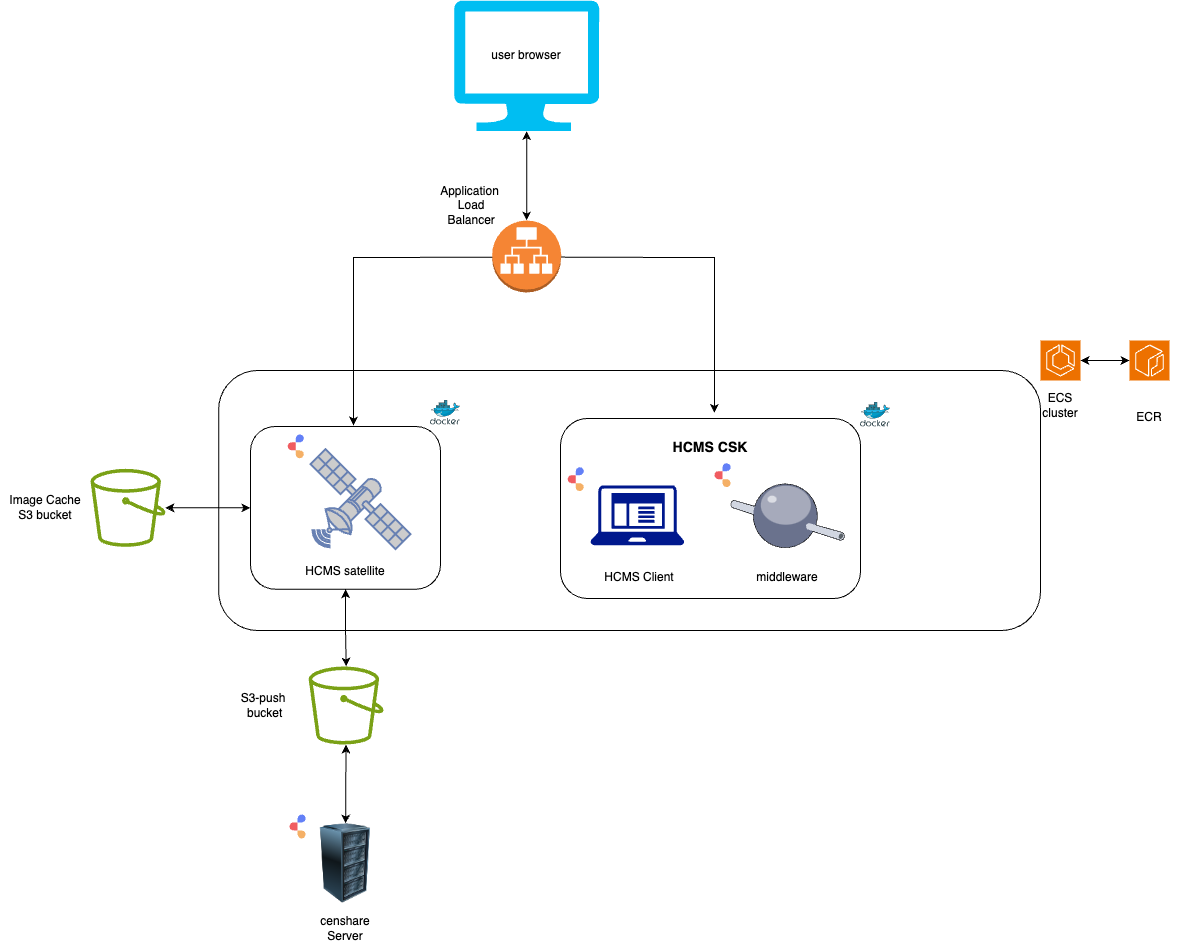Productive cloud installation in AWS
This guide is meant for productive environments, but some steps are the same as in the local installation guide.
AWS services
In AWS, you are going to use the following cloud services:
-
CloudFormation
-
S3
-
ALB | Application Load Balancer
-
EC2 | Amazon Elastic Computer Cloud
-
ECR | Elastic Container Registry
-
ECS | Elastic Container Service
-
VPC | Virtual Private Cloud
-
opt. Route 53
-
opt. Certificate Manager
-
opt. Identity and Access Management | IAM
-
opt. AWS Secrets
Note on FARGATE ECS services: the current tutorial won't allow you to use Fargate ECS. Read more about it here.
Please make sure that you are informed about current pricing for AWS which is usually bound to the actual usage. Also, we kindly ask you to refer to the AWS official documentation for specific AWS console instructions and also to familiarize yourself with some AWS concepts, such as resources, roles, permissions, and policies.
AWS infrastructure overview
Below you can see how those services enable a cloud-native deployment for the HCMS Client application.

HCMS satellitte and the HCMS Client frontend and middleware run in an ECS cluster, each in its own Docker container, built from the corresponding images stored in the ECR. The traffic from the user browser is distributed between the satellitte and the Client by the AWS ALB.
The satellitte also uses two S3 buckets: one S3-push bucket to share files with the Censhare Server (and the other way around) and one Image Cache S3 bucket to cache generated image variants.
Re-using existing services
If you already run any applications on AWS, you can re-use the following services for your HCMS Client installation.
Application Load Balancer
You can use the same load balancer:
-
for multiple applications, including the HCMS Client and middleware
-
for multiple environments of the HCMS Client
This allows to reduce cost as ALB is billed not only for the actual usage (at least at the time of writing).
S3 bucket
S3 buckets already used by the Censhare Server can be used as S3-push buckets for deploying the HCMS satellite. This will be explained in detail in the next articles.
ECS cluster
Existing ECS cluster can be (and should be) used, as long as there is enough space (CPU, memory) to fit everything in.
Overview of steps
-
Check the prerequisites
-
Read about infrastructure as code
-
Create AWS storage resources
-
Create everything required for a load balancer and the balancer itself
-
Read about running application containers in the Elastic Container Service
-
Create task definitions
-
Deploy them as services
-
Create an admin account for the HCMS Client like for the local installation
Warning While working with the AWS console UI, pay attention that you do not jump between the regions, as absolutely all resources are bound to a certain region. If you cannot find your resources, check the region dropdown on the top right.
You can read more about this and other possible pitfalls in the troubleshooting article.